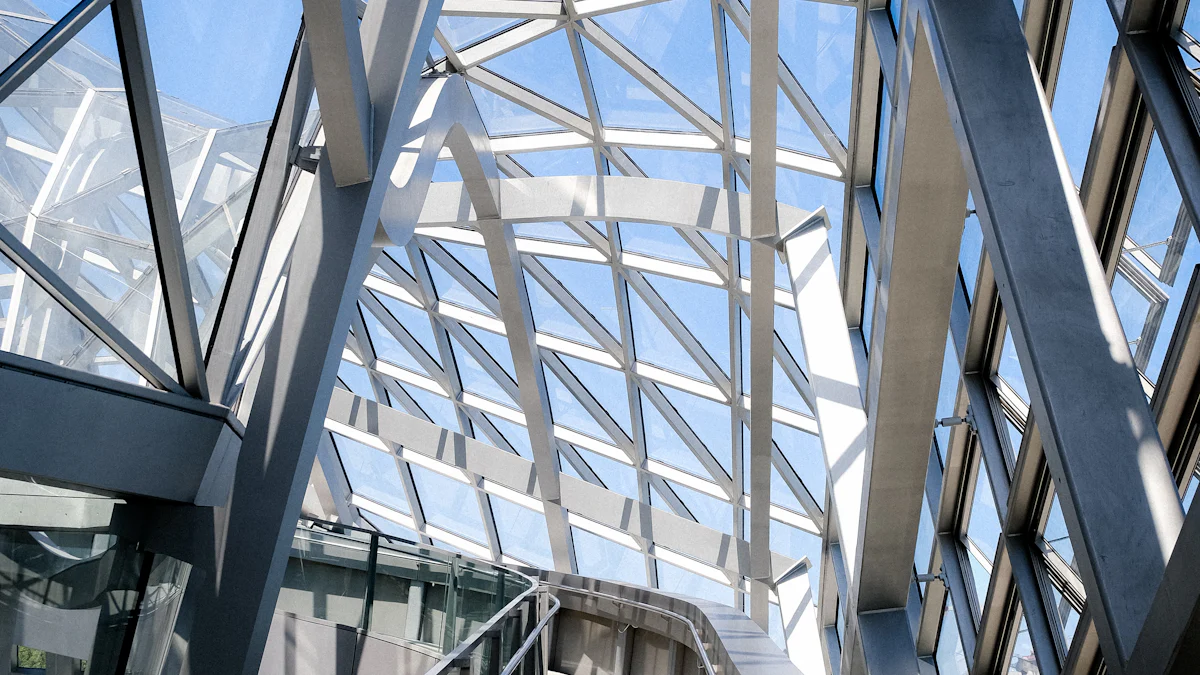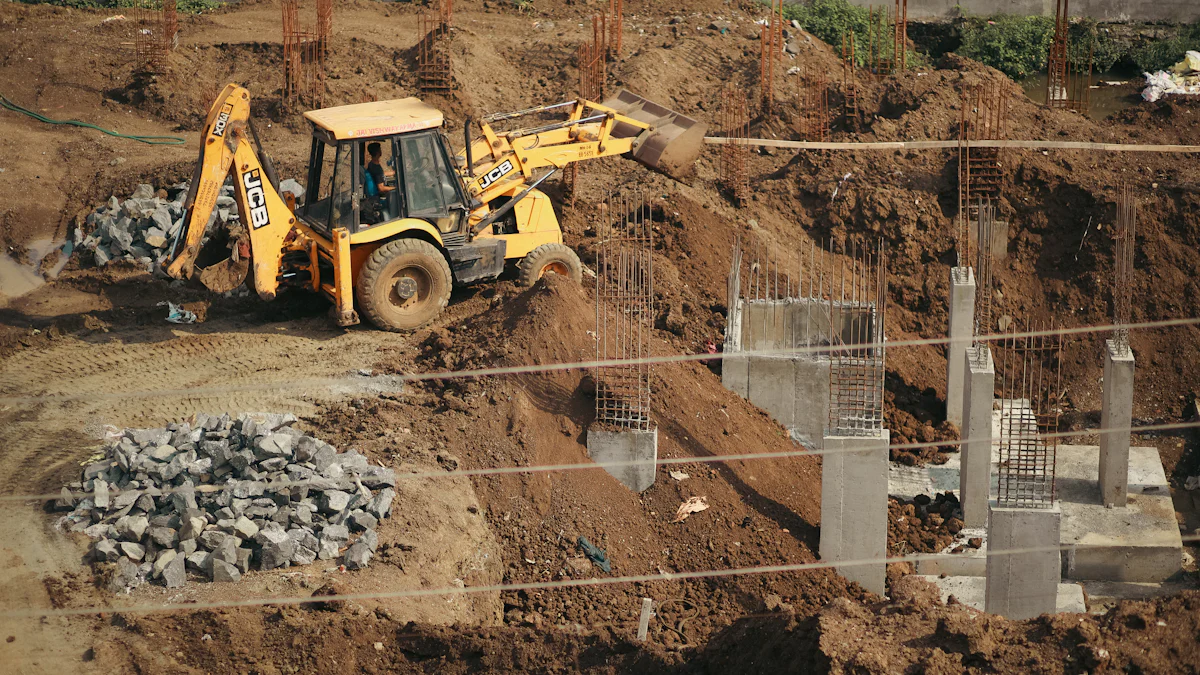
Wheelchair ramps play a crucial role in enhancing accessibility for individuals with mobility challenges. The demand for these ramps has grown significantly, driven by an increasing geriatric population and the prevalence of disabilities. Two primary materials dominate the market: aluminum and steel. Aluminum wheelchair ramps with handrails offer lightweight, durable solutions that require minimal maintenance. Steel ramps, on the other hand, provide strength and aesthetic appeal. This comparison aims to guide you in selecting the most suitable option based on specific needs and preferences.
Installation
Aluminum Ramps
Ease of Installation
Aluminum ramps provide a straightforward installation process. The lightweight nature of aluminum simplifies handling and positioning. Users can often set up these ramps without professional assistance. The modular design allows for quick adjustments to fit different spaces. No permits are necessary, which speeds up the installation timeline.
Tools and Equipment Required
Basic tools suffice for installing aluminum ramps. A standard wrench set and a screwdriver are typically adequate. Aluminum ramps do not demand specialized equipment. This simplicity reduces the overall cost and effort involved in the installation.
Steel Ramps
Complexity of Installation
Steel ramps present a more complex installation challenge. The heavier weight of steel requires additional manpower or machinery for placement. Users often need professional help to ensure proper setup. The solid structure of steel may necessitate permits, adding time to the installation process.
Tools and Equipment Required
Installing steel ramps demands more robust tools. Power tools like drills and impact wrenches are often necessary. Specialized equipment may be required to handle the weight and secure the ramp. This complexity increases both the cost and time needed for installation.
Maintenance
Aluminum Ramps
Maintenance Requirements
Aluminum ramps require minimal maintenance. The corrosion-resistant properties of aluminum reduce the need for frequent upkeep. Regular cleaning with mild soap and water keeps the surface in good condition. No special treatments or coatings are necessary to maintain durability.
Longevity and Durability
Aluminum ramps offer excellent longevity. The lightweight nature does not compromise strength. These ramps withstand harsh weather conditions without degrading. The design ensures resistance to rust and corrosion, making them ideal for outdoor use.
Steel Ramps
Maintenance Requirements
Steel ramps demand more attention. Regular inspections are necessary to check for rust. Protective coatings help prevent corrosion. Cleaning involves using specific products to maintain the finish. Maintenance tasks may include repainting or treating the surface to ensure longevity.
Longevity and Durability
Steel ramps excel in strength and durability. The robust structure provides long-term reliability. Steel resists wear and tear effectively. Proper maintenance enhances resistance to environmental factors. Steel ramps remain a strong choice for heavy-duty applications.
Cost
Aluminum Ramps
Initial Cost
Aluminum ramps usually involve a higher initial investment. Prices for residential aluminum ramps start around $1,000 and can exceed $10,000. The cost reflects the quality and features like slip-resistant surfaces and handrails. Commercial aluminum ramps often come at a higher price due to additional specifications.
Long-term Cost Efficiency
Aluminum ramps offer significant long-term savings. The durability and low maintenance reduce ongoing expenses. Aluminum resists corrosion, minimizing repair costs. The lightweight design allows easy relocation without extra charges. Over time, aluminum ramps prove cost-effective.
Steel Ramps
Initial Cost
Steel ramps generally require a lower initial outlay. The material costs less compared to aluminum. This makes steel a budget-friendly choice for immediate needs. However, consider the potential need for professional installation, which may add to the initial expense.
Long-term Cost Efficiency
Steel ramps demand more maintenance over time. Regular treatments to prevent rust increase costs. The heavier weight may incur additional fees for adjustments or relocation. Despite the lower initial cost, the total ownership cost can rise. Evaluate these factors when considering steel ramps.
Durability

Aluminum Ramps
Resistance to Weather Conditions
Aluminum ramps excel in resisting harsh weather conditions. The corrosion-resistant properties ensure longevity outdoors. Rain, snow, and sunlight do not degrade the material. Aluminum maintains its integrity without special treatments.
Wear and Tear Over Time
Aluminum ramps handle wear and tear effectively. The lightweight design does not compromise strength. Regular use does not lead to significant deterioration. Aluminum ramps remain reliable and safe over long periods.
Steel Ramps
Resistance to Weather Conditions
Steel ramps offer robust resistance to environmental factors. The solid structure withstands heavy loads and impacts. However, steel requires protective coatings to prevent rust. Regular maintenance ensures continued performance.
Wear and Tear Over Time
Steel ramps demonstrate excellent durability under frequent use. The sturdy construction supports heavy-duty applications. Rust prevention measures are essential for maintaining quality. Proper care extends the lifespan of steel ramps.
Aluminum Wheelchair Ramps with Handrails

Benefits of Handrails
Enhanced Safety
Aluminum wheelchair ramps with handrails provide enhanced safety. Users experience increased stability while navigating the ramp. Handrails offer a secure grip, reducing the risk of falls. The design of aluminum handrails often includes slip-resistant surfaces. This feature ensures a firm hold even in wet conditions. Vista Railings, experts in railings, emphasize the flexibility and low maintenance of aluminum. These qualities contribute to the overall safety of aluminum ramps.
User Support and Stability
Handrails on aluminum ramps support users with limited mobility. The round shape of aluminum handrails allows for easy grasping. This design offers comfort during use. Users feel more confident when ascending or descending the ramp. Aluminum Handrail Direct states that well-maintained aluminum handrails last over 20 years. This longevity ensures consistent support and stability for users.
Comparison with Steel Handrails
Graspability
Aluminum handrails excel in graspability compared to steel. The round design of aluminum handrails resembles grab bars. This shape provides a more natural grip for users. Steel handrails often feature flat and narrow designs. These designs can be challenging to hold securely. Aluminum offers a more user-friendly option for individuals with limited hand strength.
Design and Comfort
The design of aluminum handrails prioritizes comfort. Aluminum ramps often include ergonomic features. These features enhance the user’s experience. Steel handrails may lack these design considerations. Users may find steel less comfortable over extended use. Aluminum wheelchair ramps with handrails combine functionality with user comfort. This combination makes aluminum a preferred choice for many.
The comparison between aluminum and steel wheelchair ramps highlights distinct advantages. Aluminum ramps excel in ease of installation, minimal maintenance, and long-term cost efficiency. Users frequently praise the slip-resistant surface for enhancing safety. The lightweight design facilitates easy handling and relocation. Thousands of customers have attested to the durability and practicality of aluminum ramps. For those seeking reliable and user-friendly options, aluminum ramps prove superior. Consider products like the PATHWAY HD Code Compliant Modular Access System from EZ-ACCESS for robust performance. Aluminum ramps offer a comprehensive solution for accessibility needs.









